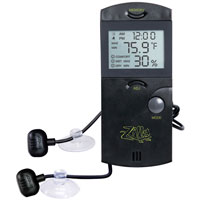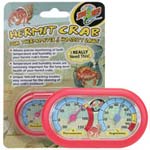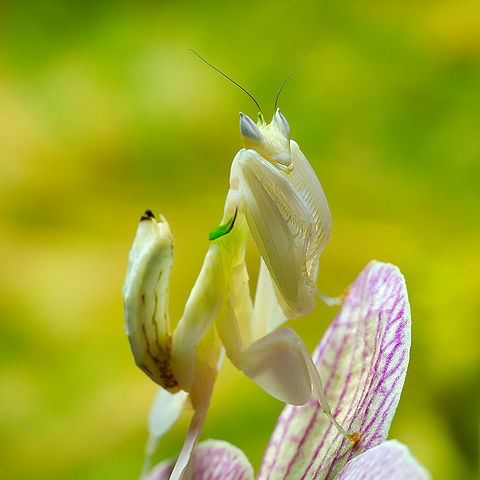Like most lifelong animal keepers, I consider myself to be a fairly good judge of humidity levels in the home terrariums and zoo exhibits under my care. But when I began working in new buildings equipped with state-of-the-art hygrometers (humidity gauges), I quickly realized that I had much to learn. I was especially surprised to discover how widely humidity levels can vary within even a small enclosure, and how this can affect every facet of an animal’s life. The accurate, easy-to-use humidity gauges now available offer us the chance to provide better care to our charges and perhaps to uncover important new details about their lives.
Recent Innovations in Humidity Monitoring
Over the past several decades, hobbyists and zoos have greatly expanded the number of rare and delicate species that can be kept and bred in captivity. Many of these successes have been due to an increased understanding of the roles that UVB, temperature, diet and other such factors play in their lives.
Humidity levels have also been taken into account by serious animal owners, but this topic has been given less attention than others. This is partially because many reptiles, and some amphibians and invertebrates, can meet their needs by soaking in a water bowl or retreating to a moist shelter. But the real obstacle has been the unavailability of affordable hygrometers designed for use with animals. Happily, humidity gauges that fit just about every terrarium and budget are now available, and all are very simple to use (since I can do it!).
Areas of Special Concern
While all animals are to some degree affected by humidity levels, certain captives require closer monitoring than others. Humidity levels are crucial when most species are shedding/molting. Scorpions, centipedes, tarantulas, hermit crabs, mantids and other invertebrates easily become, as we say, “stuck in the molt” when humidity levels are too low. While we can sometimes assist them in this situation, most die.
Reptiles and amphibians usually survive dry molts, but problems ranging from fungal/bacterial infections beneath old skin to digit loss and retained eye caps may result. Poison frogs and other small, highly active amphibians, and those that remain in the open when resting, as do most treefrogs, are especially at risk from overly-dry conditions. Please see the articles below for further information on herp and invertebrate shedding concerns.
Humidity plays an important role in activity levels, cutaneous respiration, reproduction, immune system function, skin health and a wide variety of other processes. With so many amphibians in dire need of captive breeding these days, I believe it is critical that we begin to record our observations concerning humidity levels. Please consider using a hygrometer and relaying your thoughts by posting below; I’ll be sure to pass the information along, thanks.
The Zilla Humidity and Temperature Digital Gauge
 This is my favorite gauge for average to large terrariums. The separate probes for temperature and humidity attach to the glass via suction cups, allowing for easy movement so that various areas of the terrarium (cave, basking site, etc.) can be monitored. I find the thin, 59 inch-long wires connected to the probes to be especially valuable. In smaller enclosures, the wires can be rolled up and secured with a twist-tie. The unit itself measures only 4 x 1 ½ inches, and is quite unobtrusive. It remains outside the terrarium, and features a built-in stand and a notch for wall mounting.
This is my favorite gauge for average to large terrariums. The separate probes for temperature and humidity attach to the glass via suction cups, allowing for easy movement so that various areas of the terrarium (cave, basking site, etc.) can be monitored. I find the thin, 59 inch-long wires connected to the probes to be especially valuable. In smaller enclosures, the wires can be rolled up and secured with a twist-tie. The unit itself measures only 4 x 1 ½ inches, and is quite unobtrusive. It remains outside the terrarium, and features a built-in stand and a notch for wall mounting.
The Zilla Gauge monitors a humidity range of 10-99% and temperatures from -58 F to 158 F (if your pet requires conditions outside of those ranges, it likely belongs in a zoo!). “Comfort”, “Wet” and “Dry” messages are displayed at certain readings. While these are general in nature and will not apply to all species, many hobbyists find them useful. Temperatures can be displayed in either Fahrenheit or Celsius.
The unit also features an alarm, which can function as a reminder to check the terrarium or administer medications (if you sleep as lightly as I, it might also serve as an alarm clock!).
The Zoo Med Dual Humidity Gauge and Thermometer
 Although marketed for use with hermit crabs, this small (3” x 1 ½”) gauge is ideal for small to moderately-sized terrariums housing most any species. Despite being quite inexpensive, it is accurate and stands up well to both damp and hot conditions.
Although marketed for use with hermit crabs, this small (3” x 1 ½”) gauge is ideal for small to moderately-sized terrariums housing most any species. Despite being quite inexpensive, it is accurate and stands up well to both damp and hot conditions.
The temperature and humidity levels are displayed side-by-side on brightly-colored, easy-to-read dials. “Dry”, “Optimum” and “Wet” ranges (for hermit crabs) are shown in different colors. The gauge attaches to glass with a sturdy Velcro strip.
Being colorful and simple to read, the Zoo Med Gauge is a great way to introduce youngsters to the concept of monitoring and recording environmental conditions. I plan to present several to my 5-year old nephew (shown here examining his “pet” mosquito larvae, much to his mom’s chagrin!) for use with his fire salamanders and domino roaches.
 That Reptile Blog – Reptile, Amphibian and Exotic Pet Care and Information
That Reptile Blog – Reptile, Amphibian and Exotic Pet Care and Information




what makes you say that the zilla humidity and temp gages are accurate?
Are they adjustible?
How did you come to this understanding of accuracy, especially for humidity?
-Nino
Hello,
Thanks for your interest. I’m not sure I understand what is meant by “adjustable”; the settings are as described in the article. Design and accuracy were tested before the product was introduced; a lifetime working with reptiles in zoos etc has given me a decent facility for gauging humidity (one would hope!) and product suppliers; I’ve not had any problems with this item. Best, Frank